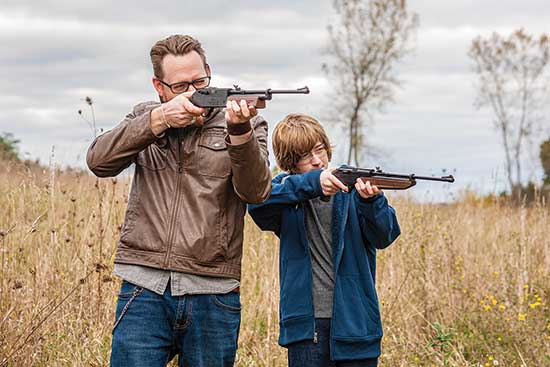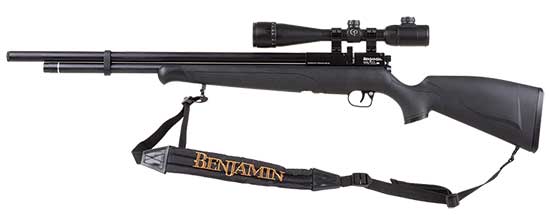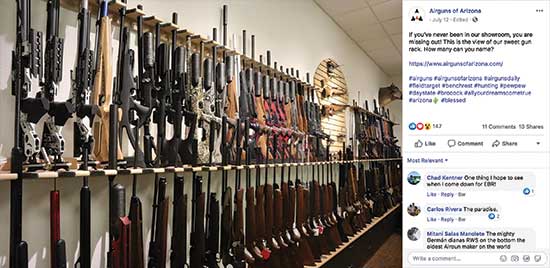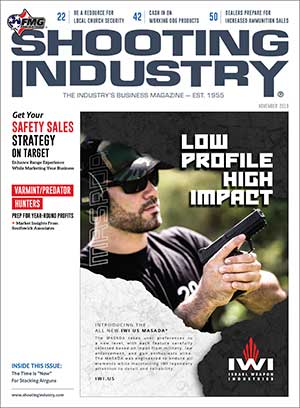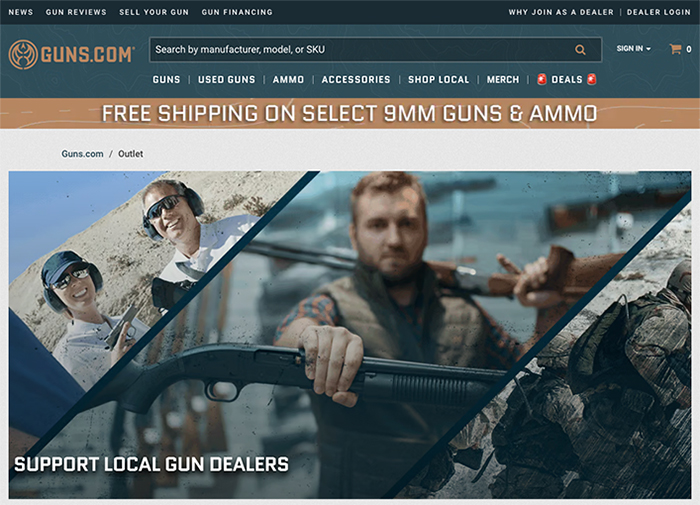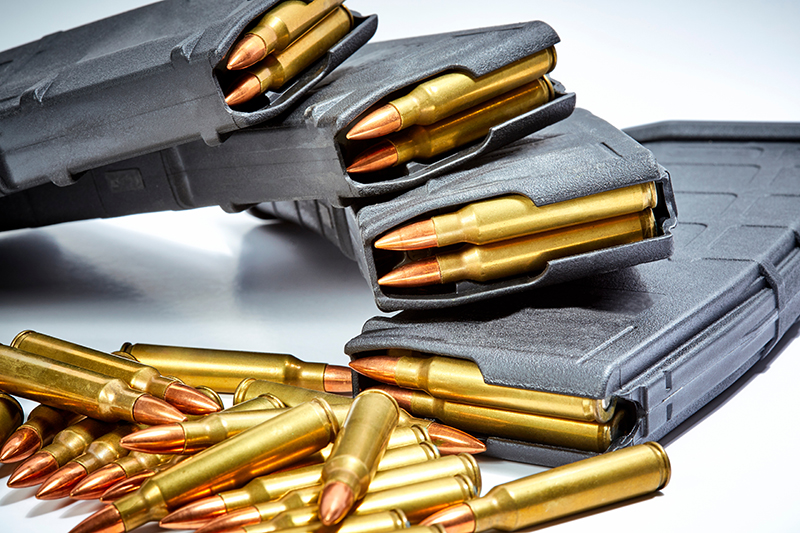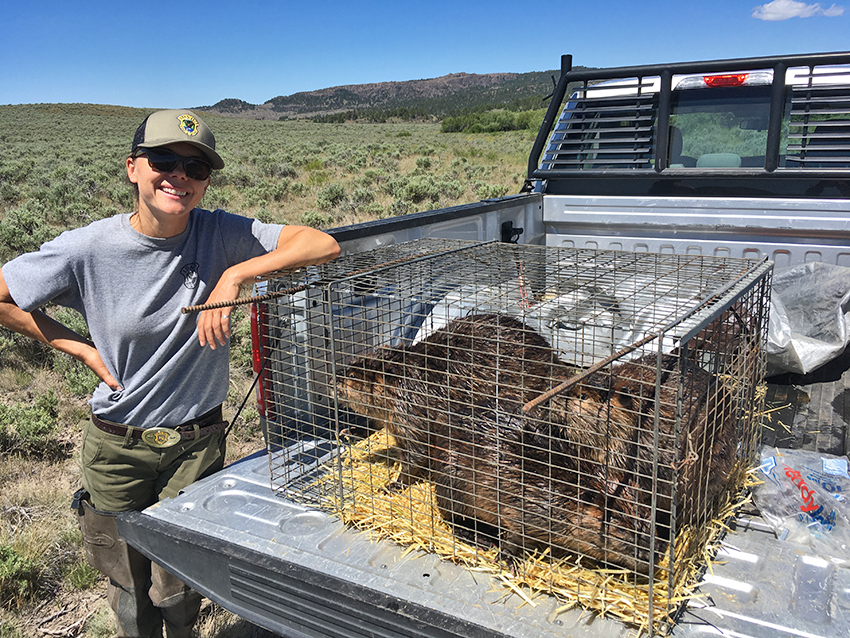“The demand has fluctuated over the last five to six years, so we adjust our inventory as needed,” Clanahan noted. “We typically stock 10–12 airguns at a time and this year we’ve seen a surge in popularity for standard break-barrel airguns.”
In describing their typical airgun customer, he said the majority use them to keep rabbits out of their garden, birds out of their berries and squirrels off of their house.
“Most people don’t want to spend a lot on varmint control,” Clanahan shared. “But, we do see a lot of return customers who of course come back in for more pellets or to upgrade to a higher-power scope.”
His advice for other dealers: You know your customers best, so don’t go overboard and don’t be afraid to start small.
“More traditional gun manufacturers have started to enter the market, so if you aren’t sure where to start, roll a few airguns in with the regular firearms you buy to add to the inventory,” he continued.
The Time Is Now for Airguns
Inside the July issue, we provided the annual state of the firearms industry update. One of the key takeaways was despite the slowdown in firearms production and sales from peak years, the manufacturers and dealers who have been innovative and flexible in their approach are the ones continuing to thrive.
One way dealers are adapting to market conditions is by finding ways to supplement or expand their existing offerings through niche categories to not only attract a new audience, but also to add value for their current customers.
A niche category often overlooked is airguns, but it’s a category that offers a significant amount of opportunity. They’re a great option for youth or people new to the shooting sports who might be gun shy. Airguns are also commonly used by hunters and trappers of small game, as well as for varmint control. In recent years, we’ve continued to see changes in regulations throughout the country allowing airguns to be used to hunt for certain large-game species. And of course, they can also be used by those who enjoy the sport of competitive airgunning.
In fact, there’s so much opportunity with this niche that over 20 years ago Robert Buchanan built his entire business around it. Airguns of Arizona offers a full line of precision airguns, air pistols, pellets, scopes and accessories for a variety of shooting needs. With over 200 air rifles and pistols on display, it’s also one of the largest airgun showrooms in the world.
Filling A Gap
An airgun hobbyist, Buchanan noticed a hole in the market, particularly when it came to high-end airguns.
“Most dealers in the area couldn’t answer his questions or only carried a small, basic inventory,” said Greg Glover, the store’s general manager. “But he didn’t want to deal with all the regulations and legalities with being an FFL so instead opted for a full-service airgun business focused on both sales and service.”
For Airguns of Arizona, their customer base is primarily men ranging in age from 40–60 years old and the majority are strictly airgun shooters. Glover estimates roughly 25% of their customers purchase airguns for hunting purposes.
Regardless of use, there’s also a healthy market for add-ons such as pellets, scopes, cases and targets, and for pre-charged pneumatic airguns, CO2 tanks, pumps and compressors.
“Our customers are constantly coming back to buy more or to upgrade,” Glover informed.
Customers are able to test-fire guns on the store’s indoor 10-meter range to see if it’s a good fit before they purchase. For those who purchase a premium airgun, they also have an indoor 23-meter range where they test for accuracy, chronograph it, mount the scope and sight it in.
“What many dealers don’t realize is it requires a lot of specialized education to sell airguns,” Glover relayed.
Through their sister company, Precision Airgun Distribution, Airguns of Arizona imports and distributes airguns from around the world including Daystate, Weihrauch Sport and Brocock, as well as accessories from Omega Air Cylinders, MTC Optics and JSB Match Diabolo ammunition through a high-quality dealer network.
“We provide annual training for our dealers and have a van we take on the road for on-site repairs and education at our dealer locations,” said Glover. “For some of our larger training events, manufacturer representatives may attend.”
“Get On Board As Soon As You Can”
For FFL dealers who may be interested in carrying airguns at their store, Glover noted the market is healthy and expanding. In many areas, it’s becoming easier to sell airguns and harder to sell firearms.
“Get on board as soon as you can, but if you’re going to be successful you need to approach from the standpoint airguns are not a toy or just a fancy, overpriced BB gun,” he advised. “Airguns aren’t inferior to firearms, and they should be viewed as any other firearm in your store.”
He also discouraged going after the lower market because independent brick-and-mortar retailers will never be able to compete at that price point with online giants like Amazon and Walmart. However, it doesn’t mean dealers have to jump into the deep end with the high-end market; they just shouldn’t start in less than the $300–$400 range in order to be both competitive and profitable.
“ More traditional gun manufacturers have started to enter the market, so if you aren’t sure where to start,
roll a few airguns in with the regular firearms you buy to add to the inventory. ”
Chance Clanahan, Manager
Paducah Shooters Supply
Paducah, Ky.
Overcoming Challenges
When it comes to sales and marketing, Glover added one of the biggest challenges is more manufacturers are focusing on direct-to-consumer sales, adding an additional layer of competition. Additionally, airguns are subject to the same social media policies that prevent them from being advertised on popular platforms like Facebook and Instagram.
“We use these tools more so to build name recognition and top-of-mind awareness, not necessarily to drive sales,” he said. “We also see a good bit of success by actively participating in various online forums.”
On YouTube, they’ve been able to build a community of more than 77,000 subscribers by posting product reviews, how-to repair videos and live coverage from various shooting events.
Another Approach: Start Small
In Kentucky, the market is a little bit different. Chance Clanahan, manager at Paducah Shooters Supply, said most of their airgun sales are to established firearms users — although they’re starting to see more airgun-only customers each year.
When it first entered the airgun market, Paducah started with the popular Red Ryder air rifle in order to gauge demand. What they found was a relatively easy way to get an extra sale and profit margins at least double than traditional firearms. Currently, Gamo, Hatsan and Stoeger are their most popular sellers.
Room For Growth
Although they are from very different parts of the country and have different business models, both Glover of Airguns of Arizona and Clanahan of Paducah Shooters Supply agree over the next five years the airgun market will continue to grow.
From this growth, we’ve already started to see slight increases in legislation to regulate the airgun industry and the ways airguns can be used. Still, there are significantly less restrictions facing them compared to traditional firearms — making them an attractive alternative.
“For the more than 20 years I’ve been in this business, we’ve continued to see growth year after year, and I don’t foresee it changing any time soon,” Glover concluded.

